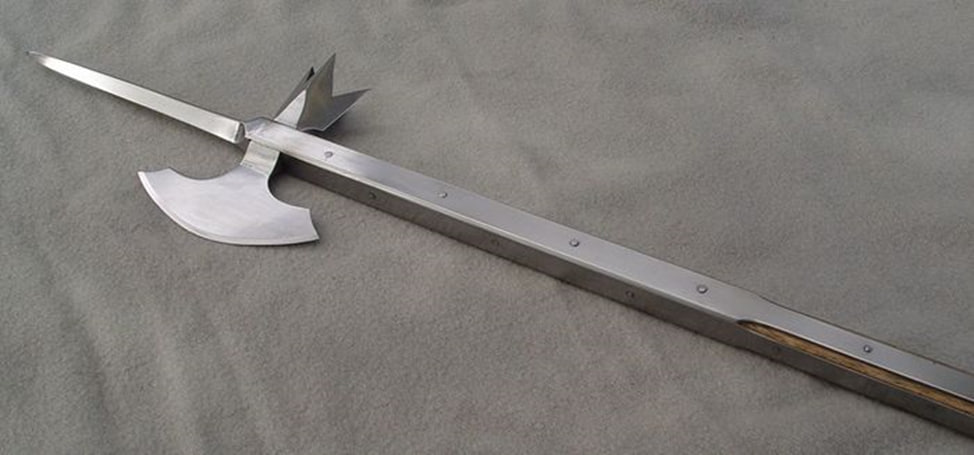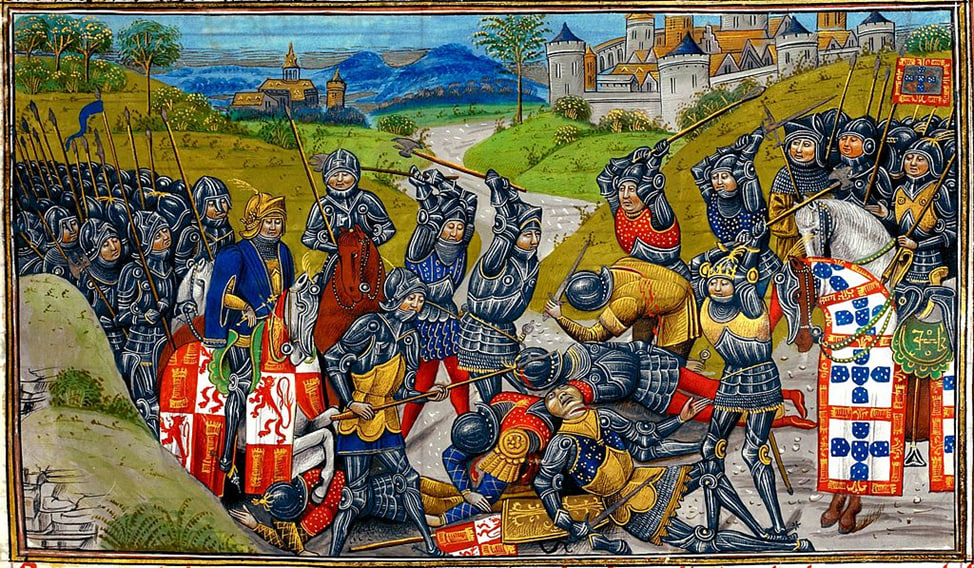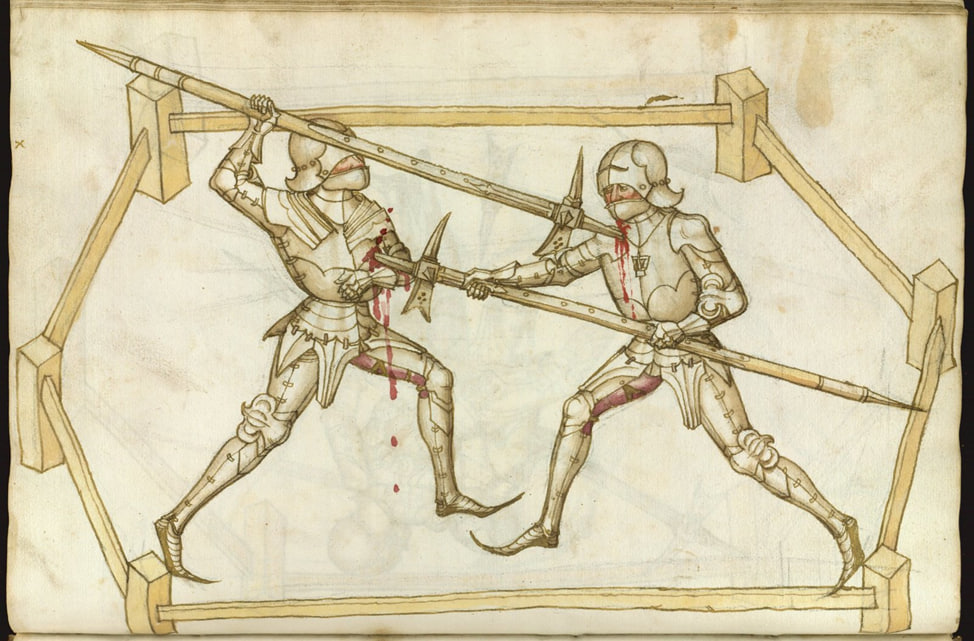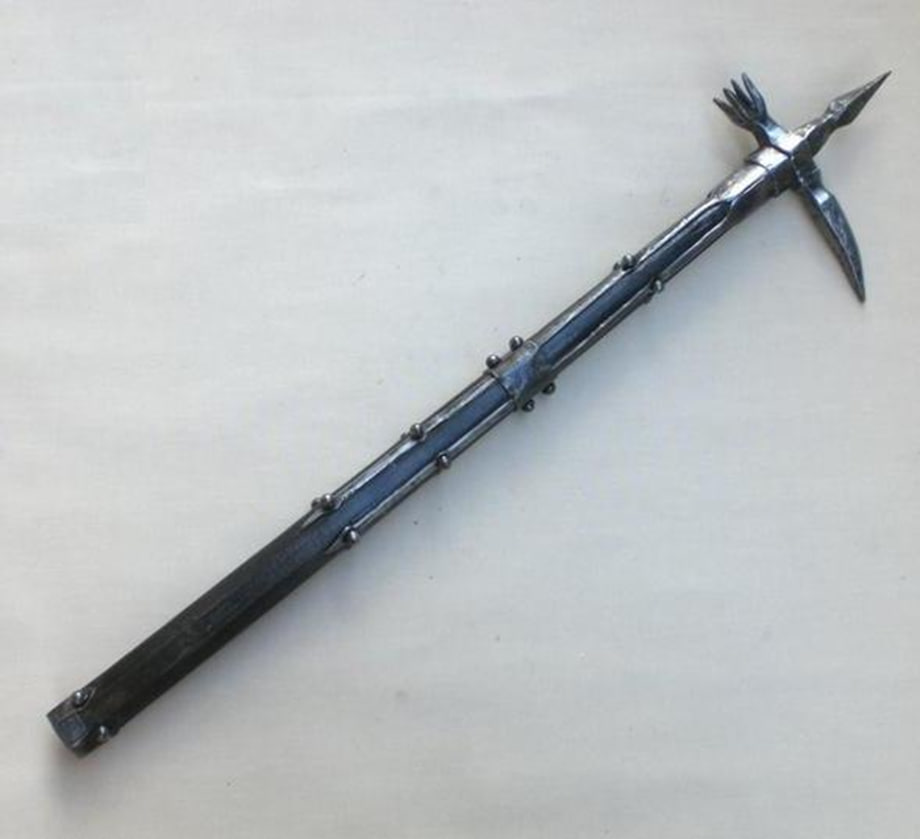
No products in the cart.
The history of polearms has a long period of use in combat of battle axes. The Sumerians also used copper axes for battles. In the ancient era, axes were actively used by the Germans, Celts, Scythian horsemen and other peoples with a tribal system. In antiquity, first of all, copies of copper and bronze were distributed, then by the end of the era, blades of iron appeared.
In the period after the fall of the Roman Empire, the era of the Early Middle Ages began, which lasted from the 5th to the 11th century AD. During this period, battle axes on a long shaft appeared, which were actively used against warriors in chain mail. Axes were effective before the appearance of plate armor from knights in the 14th century.
Poleaxe as an answer to plate
armor:
During the
period of the spread of plate armor since the 14th century, there was a need to
improve cold weapons for new realities of battle for more effective use. As a
rule, the issue of solving problems was approached by creating hybrid types of
weapons or highly specialized instances, such as misericorde. The most striking
examples of hybrid shaft weapons are axes and halberds.
In our
case, we will consider in detail the poleaxe:
Poleaxe
appeared as a result of combining an axe with a hammer or bec de corbin and
having a faceted spike. The length together with the shaft averaged 150 – 230
cm. The blade length on average did not exceed 20 cm. The weapon was quite
versatile. They could crush armor, deliver chopping blows and stab a thorn in
the joint. The spike was attached separately on top of the axe with the help of
splints, which were tightened with a through rod. The splints provided
additional strength, reducing the likelihood of the shaft breaking during the
strike. The shaft closed with a splint allowed to reflect blows.

An exact
copy of the French poleaxe dating back to 1400 – 1450. The blade length is 15
cm.
Poleaxe was
used exclusively by knights and possibly their armed servants. Most of the
authentic copies had rich decoration, traces of etching. All this emphasized the
high status of the owner of this pole weapon.
Based on
numerous data, poleaxes were used by the knight cavalry during dismounting and
battle on foot. They were actively used by knights when it was necessary to
complete a task where mounted combat could be useless.

The Battle
of Aljubarrota. 1385 year
For
example, when storming the castle walls. A plate warrior with such a weapon in
his hands with a group of the same knights were a serious threat to the
defending side. From a blow with the blade of an axe with an average length of
15 cm, a shield or gambeson, in which ordinary infantrymen were usually
dressed, could not be saved. In the event of a collision with the same
dismounted knight cavalry, an equal battle would have turned out (assuming
approximately equal numbers of each side of the battle).
Tournament weapon and a
way to resolve legal disputes:
Poleaxes
were a mandatory part during jousting tournaments. So the famous French knight Jacques
de Lalaing at a tournament in 1445 in the city of Antwerp with his partner in
the duel Jean de Boniface broke 6 spears before taking up the poleaxes. Jacques
de Lalaing, with the help of poleaxe, was able to decide the outcome of the
duel in his favor by disabling the opponent with one blow. The same Frenchman,
during a tournament duel with the Englishman Thomas Kew in Flanders in 1447,
was wounded in the arm with a thorn. The spike of poleaxe pierced the gauntlet and went through, but
Jacques, having been wounded, threw his weapon, pushed his opponent to the
ground and became the winner. Surprisingly, after that, the hand healed, and
the hero of the jousting tournaments remained healthy.
They were also used during court fights when the feudal lords could not resolve disputes peacefully.

Trial by
combat, 1459. This drawing clearly shows that the thorn was struck in poorly
protected places, armpits and neck. Also, despite all the power of the weapon,
we see that the knights preferred to finish off with a thorn in the joint of
the armor. And blows with a blade or a hammer served to cause injuries (bruises
and fractures), which were supposed to disable the enemy. It is possible to
pierce a full plate armor with a blade, but it would take a lot of time within
the battle. But it was easier to crush a separate area on the armor with a
hammer and pierce it with a spike.
Error in definition the poleaxe:
Quite often on the web you can find publications where poleaxes include pole weapon with a hammer tip and bec de corbin with a spike. This statement is fundamentally incorrect, since the poleaxe consists of two root words “pole” and “axe". That is, if there is a hammer on the tip instead of an axe, it is no longer a poleaxe. In this case, the weapon should be attributed to the Lucerne hammer, which were used in the same era.

According
to terminological definitions, the Lucerne hammer cannot refer to poleaxe.
Also, you
should not look for authentic medieval names of weapons. Since one type of
conditional glaive could have several, or even dozens of names. Medieval
warriors were very pragmatic people and followed the principle of call it a
pot, the main thing is that it worked. The exact terminology of weapons appears
closer to the 19th century.
Also,
sometimes they note the similarity with a halberd, but this will not be
entirely correct, since according to the production system, the poleaxe was
more expensive and more massive in weight. And the halberd was cheaper and
longer than its opponent. The blade of the halberd was shorter compared to the poleaxe,
which made it possible to strike with the blade at one point without scattering
inertia throughout the enemy's armor. Plus, parallel to the blade of the axe,
the halberd almost always had bec de corbin, the poleaxe could have an
alternative as a hammer on the spine.
The decline of the era:
Poleaxe
went out of circulation by the end of the 16th century. The probable reasons
were the firearms infantry, which could resist dismounted knights. Accordingly,
the knight cavalry did not need to fight on foot due to the reduction of
advantages and there was no need for poleaxe. In general, this pole weapon was
effective on the battlefield and in tournament duels of feudal lords throughout
the late 14th and until the end of the 16th century.